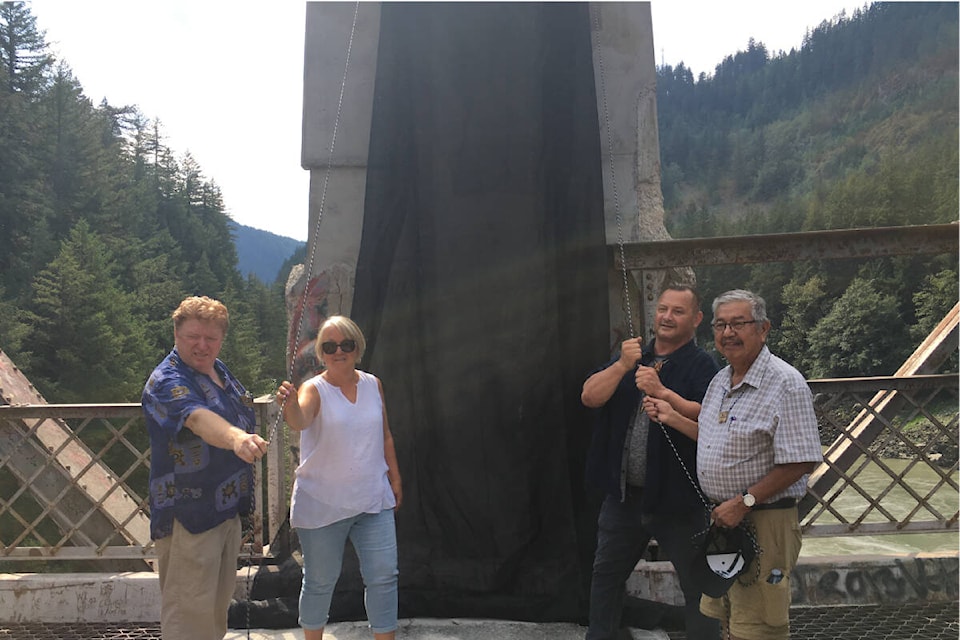As they get ready to wrap up for the season, the New Pathways to Gold Society (NPTGS) and Spuzzum First Nation celebrated the progress done so far on the Alexandra Bridge.
On Thursday morning (Aug. 25), NPTGS, partnered with the Spuzzum First Nation, unveiled the restoration work currently done on the Alexandra Bridge. Partners for the 1926 Alexandra Bridge Rehabilitation Project met at the bridge to be the first to witness the restored section of the east support tower.
Chief James Hobart of the Spuzzum First Nation says restoring the bridge has been a strong gesture of reconciliation for his community.
“Initially our members were a little concerned about the bridge. There was some apprehension. Some members said it wasn’t here to start with and that it represented, in our nation, the deposing of land,” says Hobart. “And because of that there was this concern that we were somehow affirming that [the deposing] was okay.
“But the reality was about utilizing [the bridge]. For decades we used the bridge — my mom and aunties used to cross the bridge to get to school. And as kids we would play on the bridge. Now we use the bridge to transport fish.”
Hobart says restoring the bridge will also give the Spuzzum First Nation opportunities for financial and economic development. This includes development of a campsite, convention centre, new housing and an interpretive centre. Restoring the bridge is also considered important as it will create opportunities for Indigenous and non-Indigenous communities not just in the Fraser Canyon, but throughout the Hope-Barkerville ‘Gold Rush/Spirit Trails’ corridor.
“The 1926 Alexandra Bridge site at Kequelose has been a gateway between the coast and the interior for millennia,” said NPTGS secretary Byron Spinks in a news release. “This is the most culturally and geographically diverse corridor in all of B.C. and there are hundreds of incredible Indigenous, non-Indigenous and multicultural experiences for visitors.”
The Alexandra Bridge was built in 1926 in the traditional territory of the Spuzzum First Nation. Currently it sits on the foundations of the original Cariboo Waggon Road bridge built in 1863 near Kequelose, a village that was a traditional crossing point on the Fraser River.
The bridge was decommissioned in 1964 after the construction of the new Alexandra Bridge, which is two kilometres downstream.
Restoration started on July 13 and was done by Heritage Masonry. In 2009, the Spuzzum First Nation and NPTGS formed a coalition dedicated to preserving the bridge. Other partners involved in the projects include B.C.’s Ministry of Transportation and Infrastructure (MOTI), BC Parks, BC Heritage Branch, Ministry of Forests, Lands and Natural Resource Development, CN and HeritageWorks. The restoration is currently funded by CERIP, who provided $500,000, and MOTI, who provided $400,000.
Find project updates online at newpathwaystogold.ca.
READ MORE: Work begins on restoration of Alexandra Bridge in Fraser Canyon
@KemoneMoodley
kemone.moodley@hopestandard.com
Like us on Facebook and follow us on Twitter.
